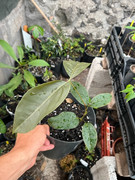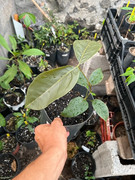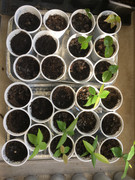Dear forum colleagues,
I am planning two subtropical food forests in the Azores (in my particular area, hardiness should be around 11, with 18 degrees C. of yearly average temperature).
In the food forests, I want to create patches for the 4 main "cash crops": mango, avocado, macadamia and coffee.
What would be the best way to combine these 4 species mono cropping patches within the food forest? Could I intercrop between them (for example macadamia and coffee), and with other species (such as bananas, etc)? What would be the best tree spacing for these crops? Any suggested varieties for these species?
Correct me if I am wrong, but I believe mono-cropping patches are necessary in food forests for the more important cash crops so as to make it easier to harvest.
Only main issues there are: wet climate (fungus related problems) and wind protection, so space for wind breaks is needed. One of the orchards is in a hill and has a big slope, facing North towards the cliffs over the ocean, the other is flatter and has good sun exposure.
More to come on this food forest projects. For now, a drone video on youtube of the orchard in the hill:
https://youtu.be/bbizB6R1qSk (I've just created this youtube account to post this video and I do not really intend to become a master of editing videos, nor a YouTuber ,).
In the video we can see the consolidated rectangle with recent plantation, surrounded by abandoned forested areas to convert to food forest.
Thanks in advance for your suggestions!
T




 let me know if and how that would be possible.
let me know if and how that would be possible.
 , but none was confiscated when senty to my address in Belgium... So I started to order seeds to Belgium, germinate them there, let them grow and then take the plants as hand luggage in the flights to the Azores (intra-EU flight). Has worked so far...
, but none was confiscated when senty to my address in Belgium... So I started to order seeds to Belgium, germinate them there, let them grow and then take the plants as hand luggage in the flights to the Azores (intra-EU flight). Has worked so far...